Abstract
Brubaker, Robert R. (U. S. Army Biological Laboratories, Fort Detrick, Frederick, Md.) and Michael J. Surgalla. Pesticins. I. Pesticin-bacterium interrelationships, and environmental factors influencing activity. J. Bacteriol. 82: 940–949. 1961—A second bacteriocin-like substance produced by all tested strains of Pasteurella pestis and P. pseudotuberculosis is described. This activity, termed pesticin II, is active against the two avirulent P. pestis strains, A12 and Java. These strains do not produce pesticin I, which inhibits the growth of type I strains of P. pseudotuberculosis. Pesticin I was also found to be active against certain strains of Escherichia coli, strain A12, but not strain Java, and some P. pestis isolates which also produce pesticin I. A number of E. coli strains produce a substance which also inhibits the growth of strains A12 and Java; the activity of this substance is dependent upon the presence of high concentrations of Ca++.
The activity of both pesticins is inhibited under anaerobic conditions or in the presence of antiserum. The activity of pesticin I, but not pesticin II, is suppressed by Fe+++, hemin, certain hemin-containing proteins, Mg++, and inorganic phosphate. Suppression of pesticin I activity by Fe+++ can be reversed by the addition of either Ca++ or Sr++ or by metal chelating agents. All tested strains of P. pestis and P. pseudotuberculosis produce a metabolite which suppresses the activity of pesticin I. The activity of this substance, termed pesticin I inhibitor, is enhanced by Fe+++, and to a lesser extent by Mg++ or by inorganic phosphate; its activity is suppressed by Mn++ and by protamine sulfate.
Full text
PDF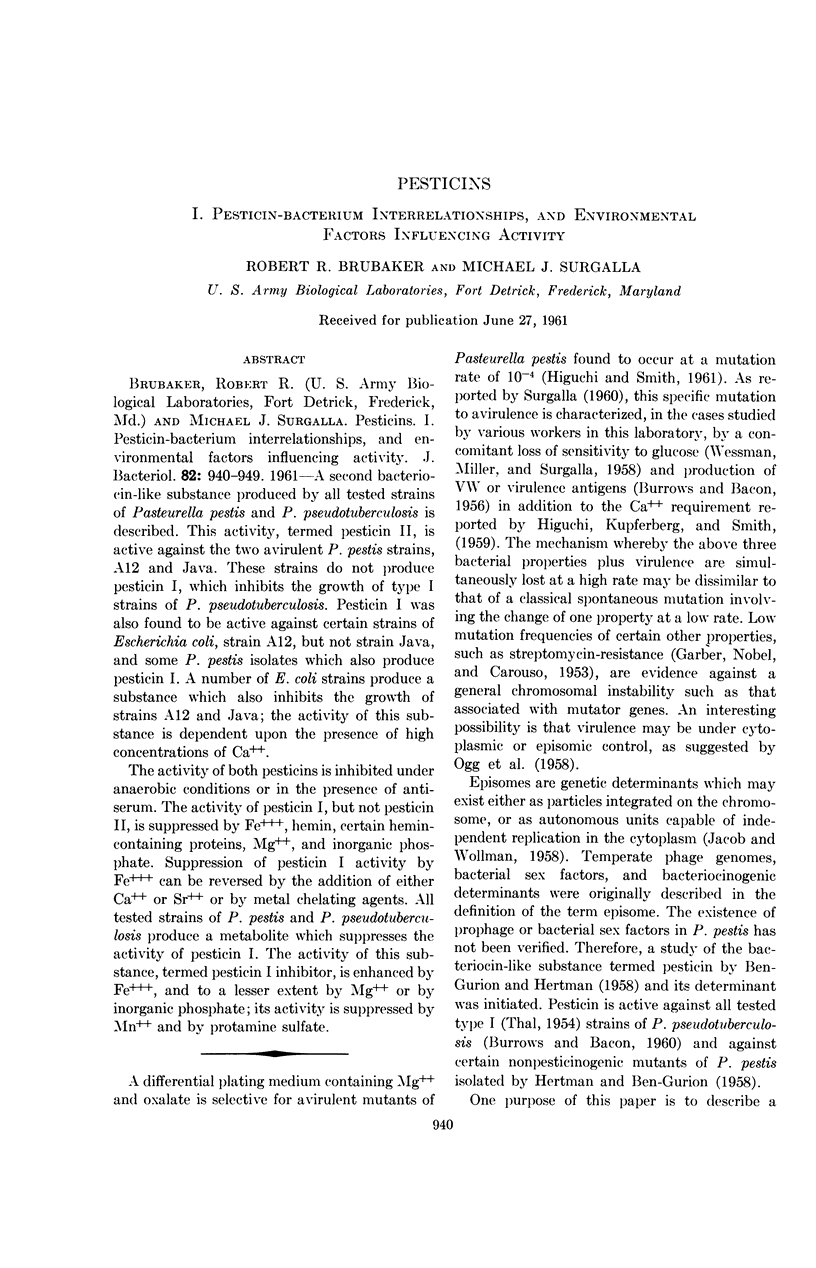

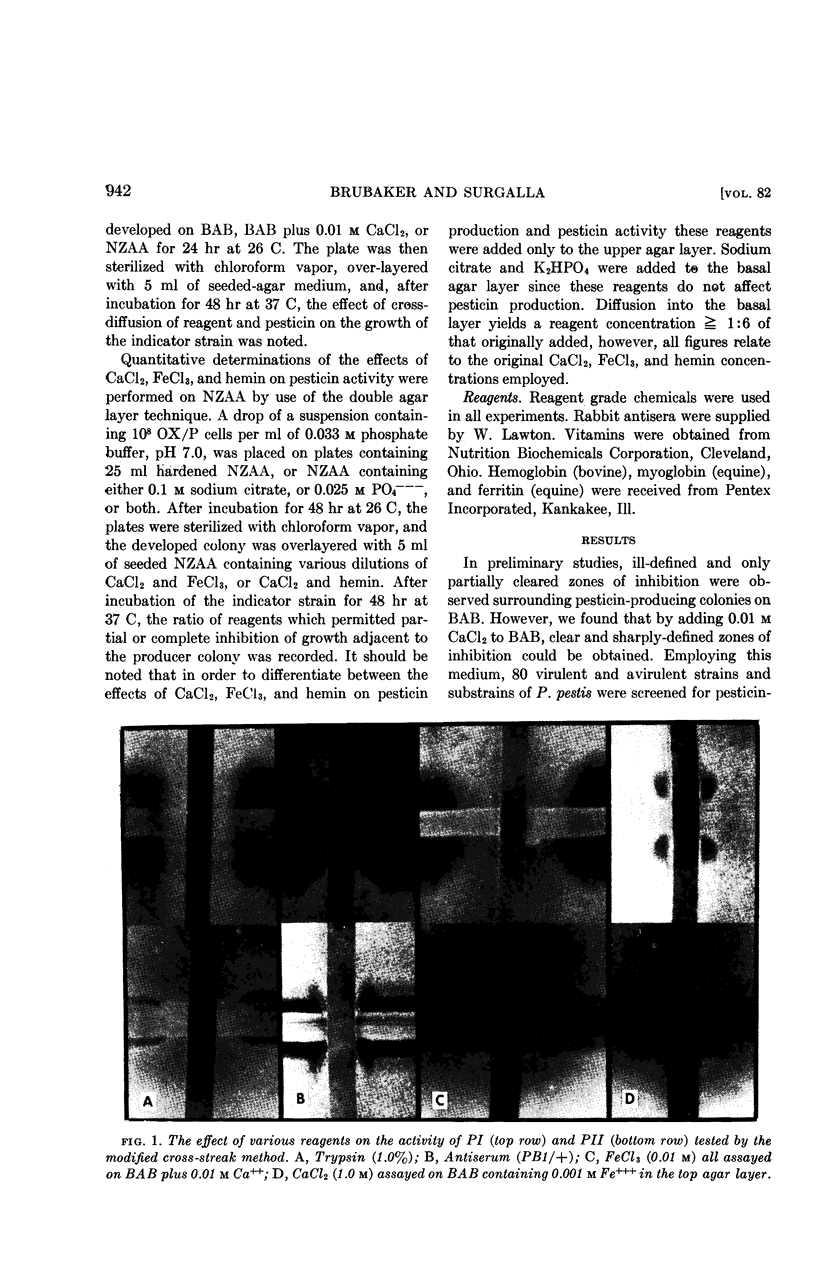
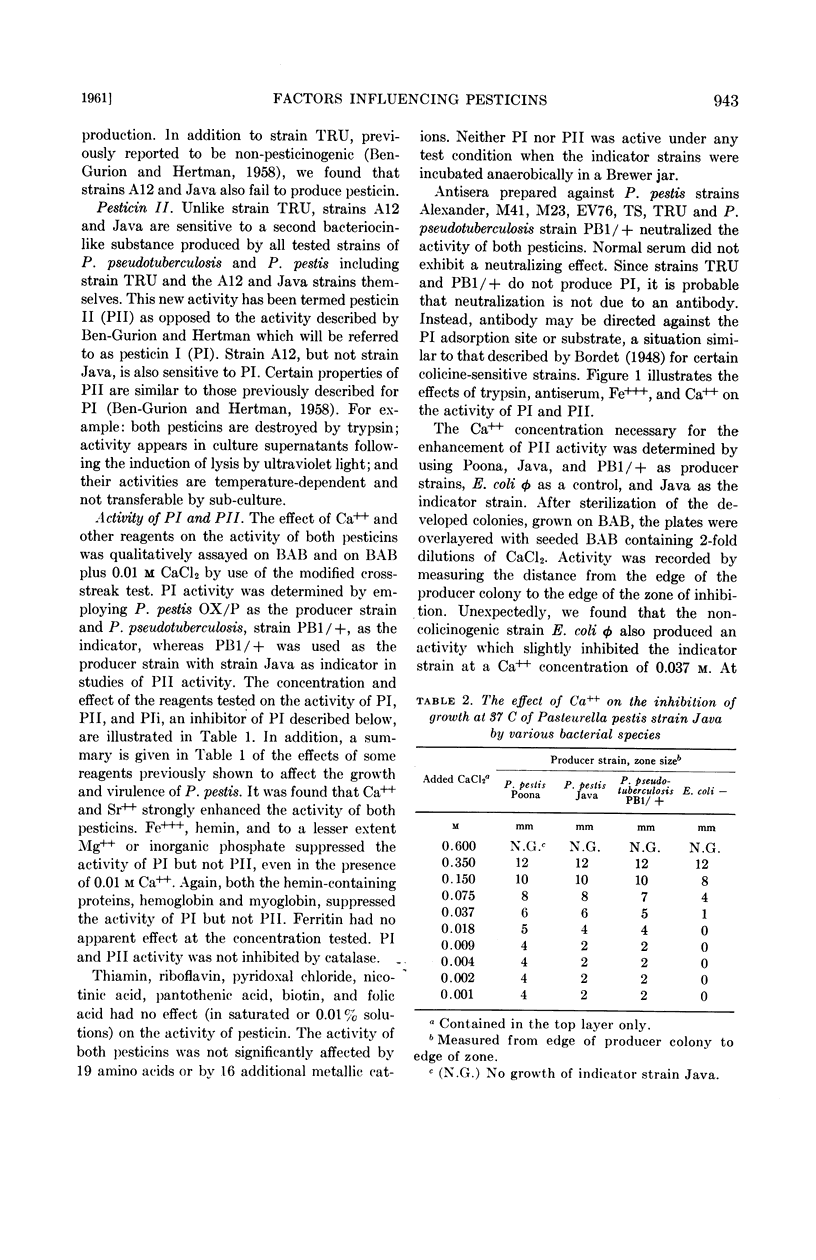
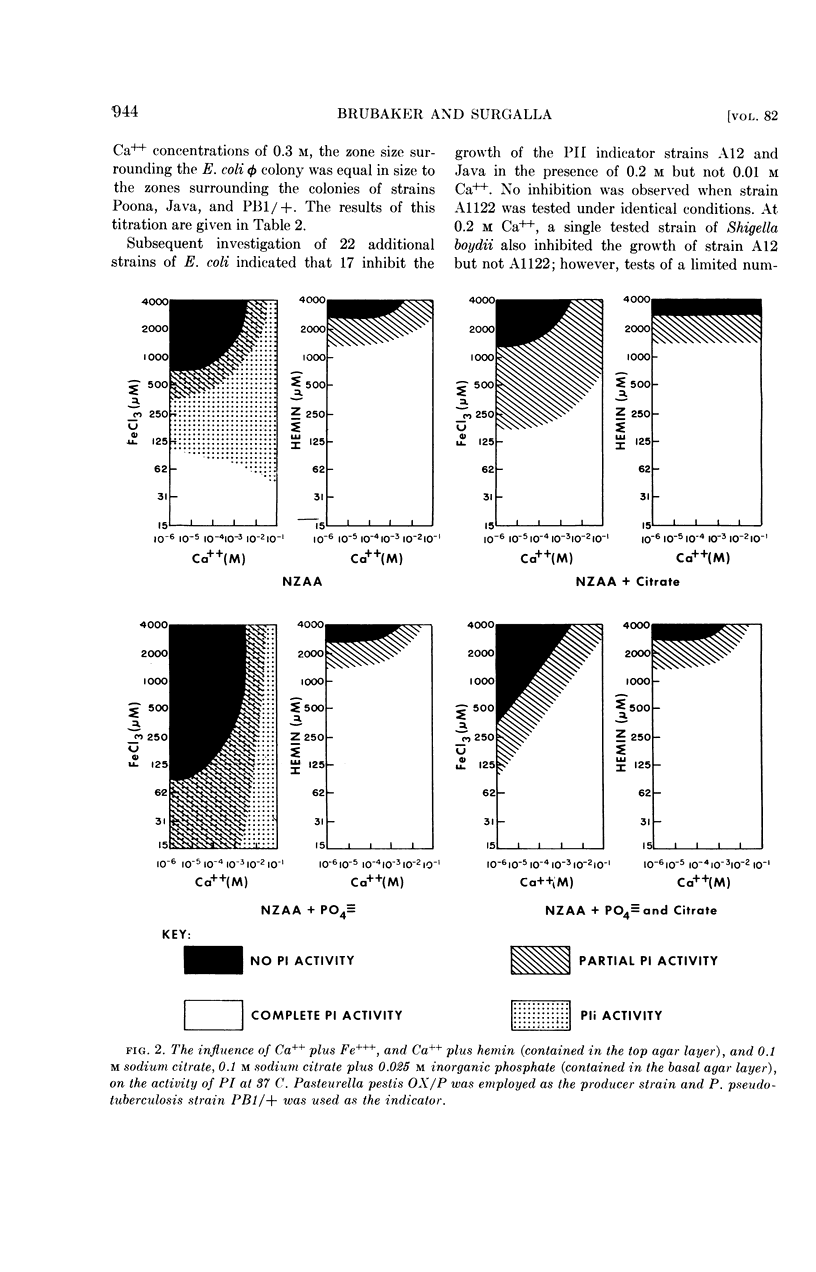
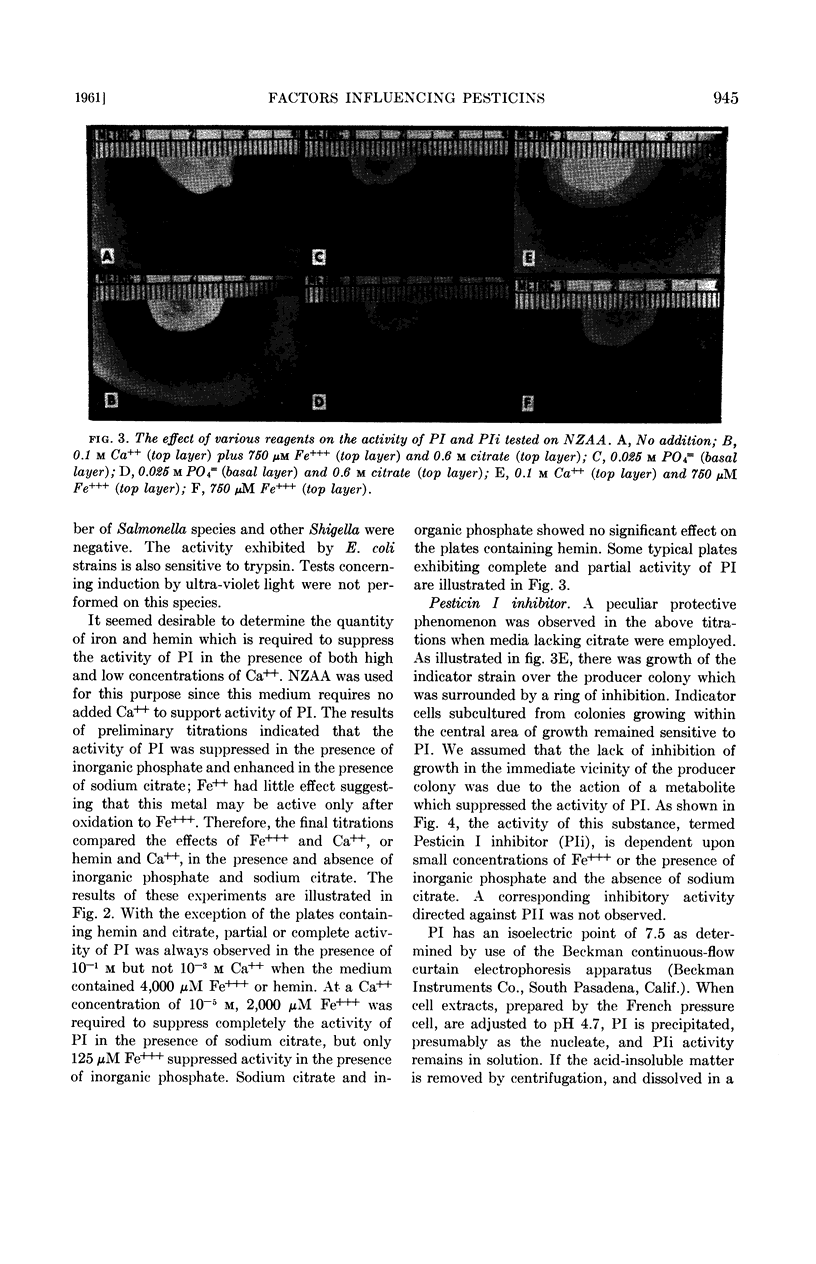
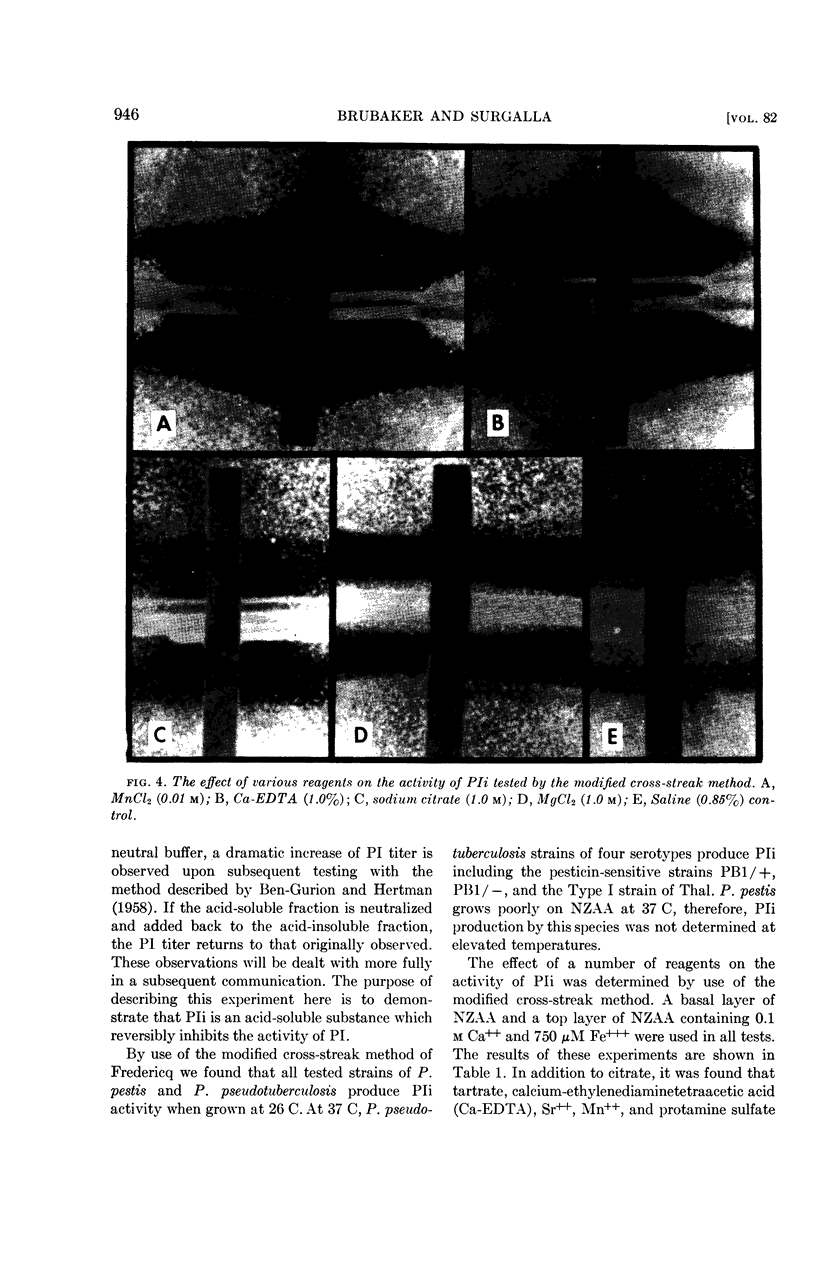
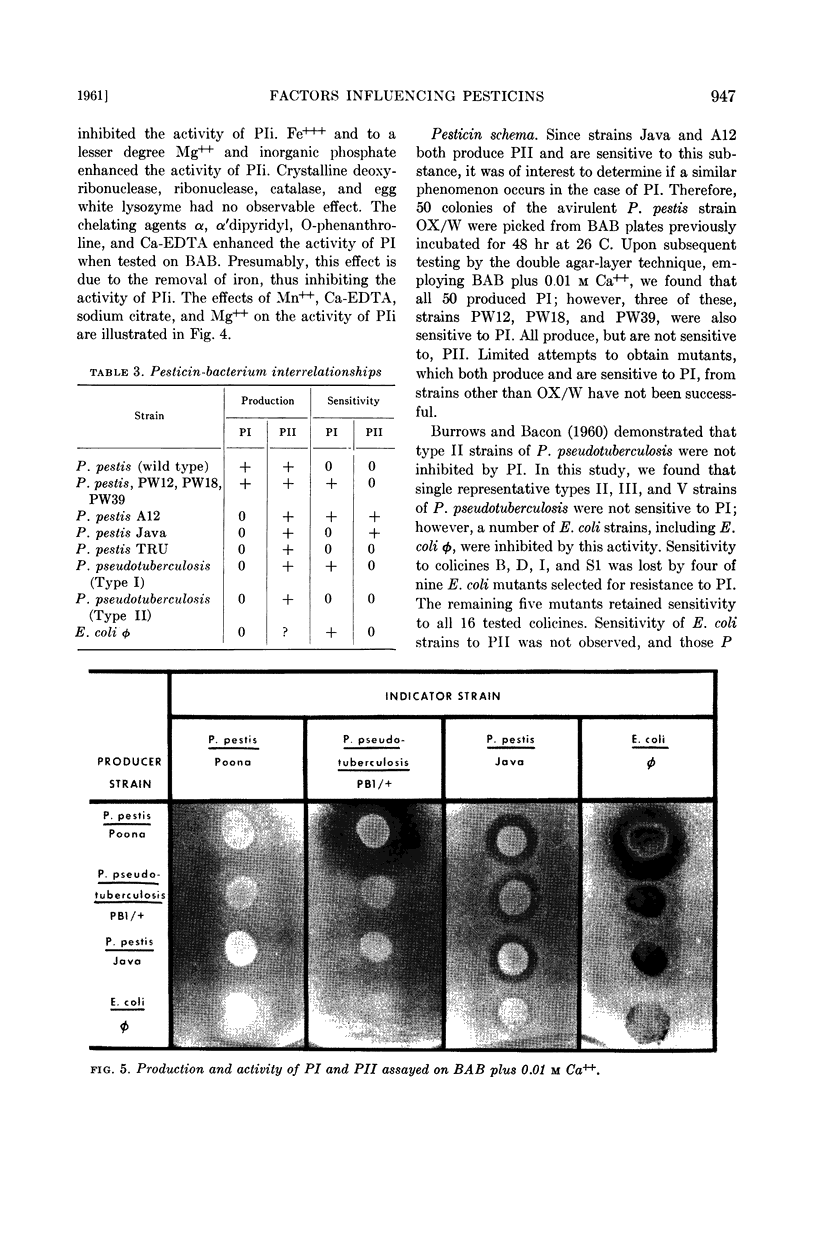
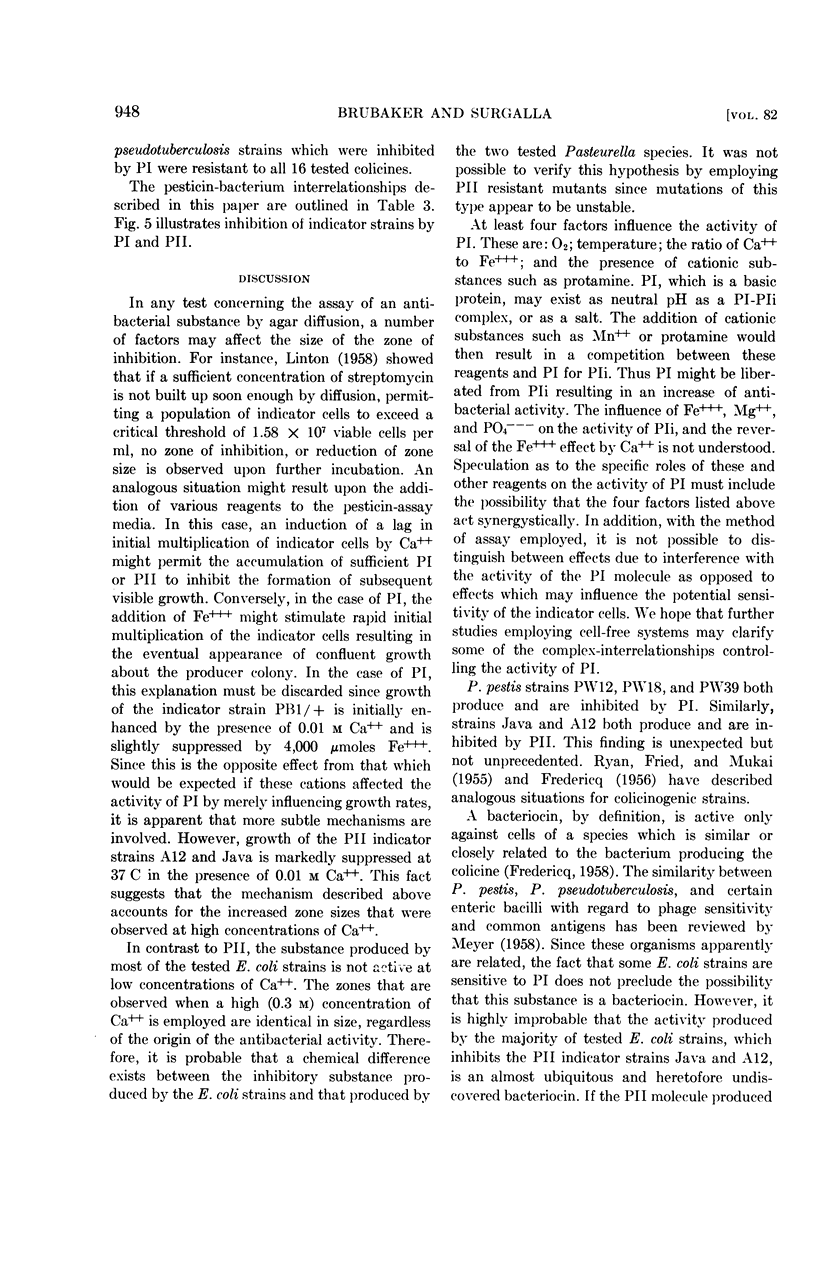
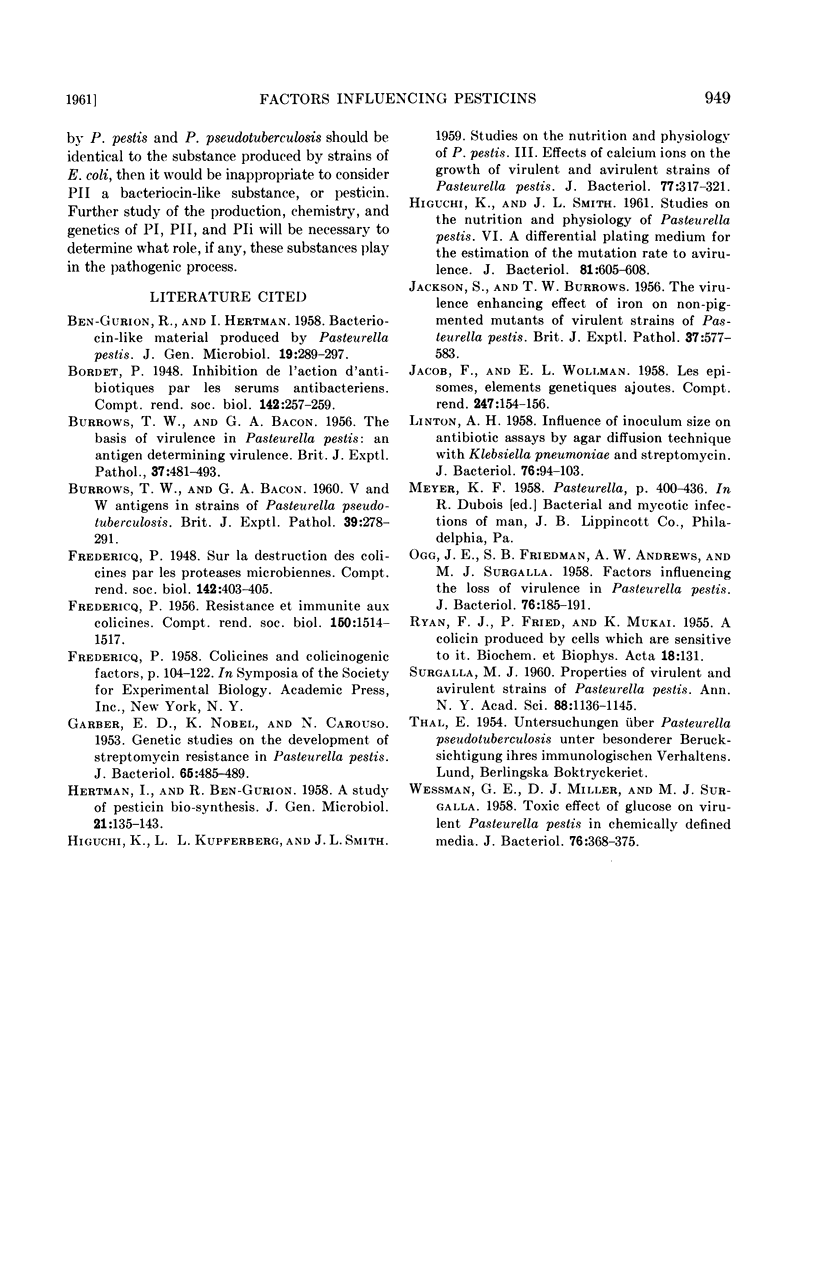
Images in this article
Selected References
These references are in PubMed. This may not be the complete list of references from this article.
- BACON G. A., BURROWS T. W. The basis of virulence in Pasteurella pestis: an antigen determining virulence. Br J Exp Pathol. 1956 Oct;37(5):481–493. [PMC free article] [PubMed] [Google Scholar]
- BEN-GURION R., HERTMAN I. Bacteriocin-like material produced by Pasteurella pestis. J Gen Microbiol. 1958 Oct;19(2):289–297. doi: 10.1099/00221287-19-2-289. [DOI] [PubMed] [Google Scholar]
- BURROWS T. W., BACON G. A. The effects of loss of different virulence determinants on the virulence and immunogenicity of strains of Pasteurella pestis. Br J Exp Pathol. 1958 Jun;39(3):278–291. [PMC free article] [PubMed] [Google Scholar]
- BURROWS T. W., JACKSON S. The virulence-enhancing effect of iron on nonpigmented mutants of virulent strains of Pasteurella pestis. Br J Exp Pathol. 1956 Dec;37(6):577–583. [PMC free article] [PubMed] [Google Scholar]
- FREDERICQ P. Colicins and colicinogenic factors. Symp Soc Exp Biol. 1958;12:104–122. [PubMed] [Google Scholar]
- FREDERICQ P. Résistance et immunité aux colicines. C R Seances Soc Biol Fil. 1956;150(7):1514–1517. [PubMed] [Google Scholar]
- GARBER E. D., NOBLE K., CAROUSO N. Genetic studies on the development of streptomycin resistance in Pasteurella pestis. J Bacteriol. 1953 May;65(5):485–489. doi: 10.1128/jb.65.5.485-489.1953. [DOI] [PMC free article] [PubMed] [Google Scholar]
- HERTMAN I., BEN-GURION R. A study on pesticin biosynthesis. J Gen Microbiol. 1959 Aug;21:135–143. doi: 10.1099/00221287-21-1-135. [DOI] [PubMed] [Google Scholar]
- HIGUCHI K., KUPFERBERG L. L., SMITH J. L. Studies on the nutrition and physiology of Pasteurella pestis. III. Effects of calcium ions on the growth of virulent and avirulent strains of Pasteurella pestis. J Bacteriol. 1959 Mar;77(3):317–321. doi: 10.1128/jb.77.3.317-321.1959. [DOI] [PMC free article] [PubMed] [Google Scholar]
- HIGUCHI K., SMITH J. L. Studies on the nutrition and physiology of Pasteurella pestis. VI. A differential plating medium for the estimation of the mutation rate to avirulence. J Bacteriol. 1961 Apr;81:605–608. doi: 10.1128/jb.81.4.605-608.1961. [DOI] [PMC free article] [PubMed] [Google Scholar]
- JACOB F., WOLLMAN E. L. Les épisomes, éléments génétiques ajoutés. C R Hebd Seances Acad Sci. 1958 Jul 7;247(1):154–156. [PubMed] [Google Scholar]
- LINTON A. H. Influence of inoculum size on antibiotic assays by the agar diffusion technique with Klebsiella pneumoniae and streptomycin. J Bacteriol. 1958 Jul;76(1):94–103. doi: 10.1128/jb.76.1.94-103.1958. [DOI] [PMC free article] [PubMed] [Google Scholar]
- OGG J. E., FRIEDMAN S. B., ANDREWS A. W., SURGALLA M. J. Factors influencing the loss of virulence in Pasteurella pestis. J Bacteriol. 1958 Aug;76(2):185–191. doi: 10.1128/jb.76.2.185-191.1958. [DOI] [PMC free article] [PubMed] [Google Scholar]
- RYAN F. J., FRIED P., MUKAI F. A colicin produced by cells that are sensitive to it. Biochim Biophys Acta. 1955 Sep;18(1):131–131. doi: 10.1016/0006-3002(55)90016-0. [DOI] [PubMed] [Google Scholar]
- WESSMAN G. E., MILLER D. J., SURGALLA M. J. Toxic effect of glucose on virulent Pasteurella pestis in chemically defined media. J Bacteriol. 1958 Oct;76(4):368–375. doi: 10.1128/jb.76.4.368-375.1958. [DOI] [PMC free article] [PubMed] [Google Scholar]






